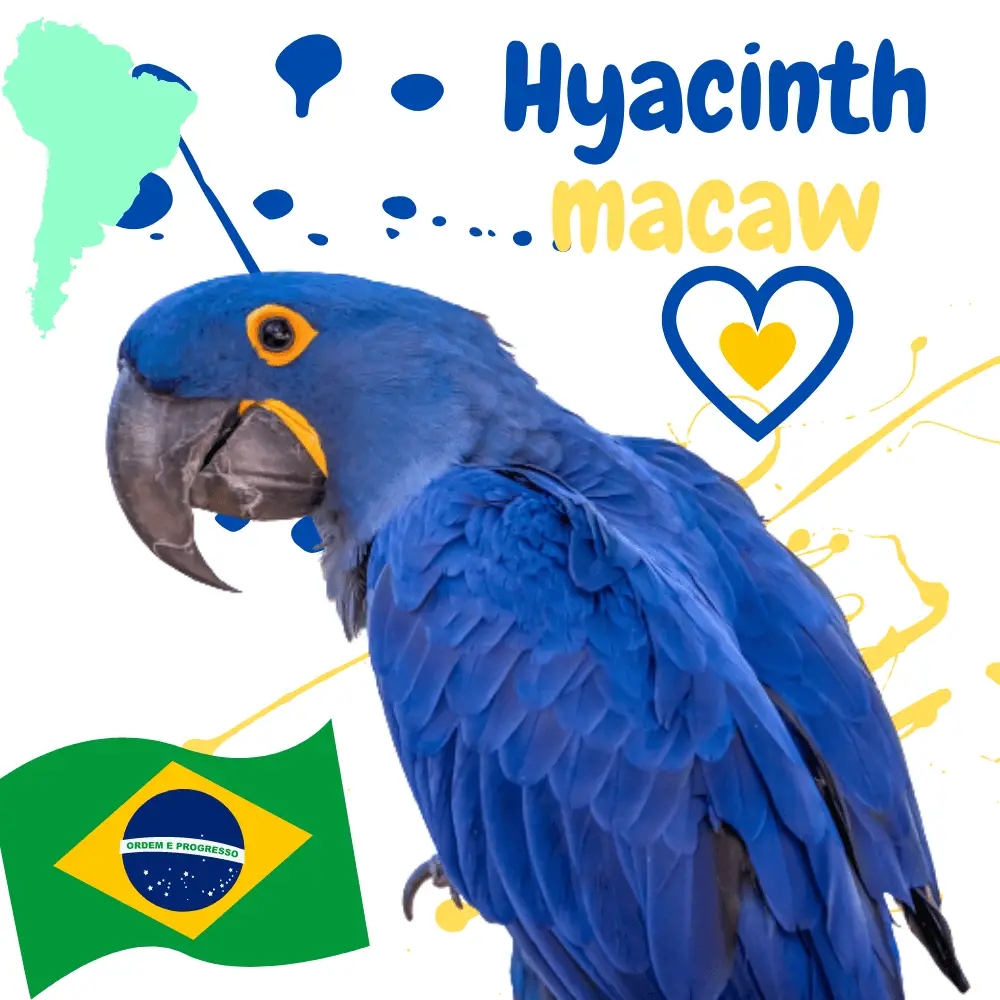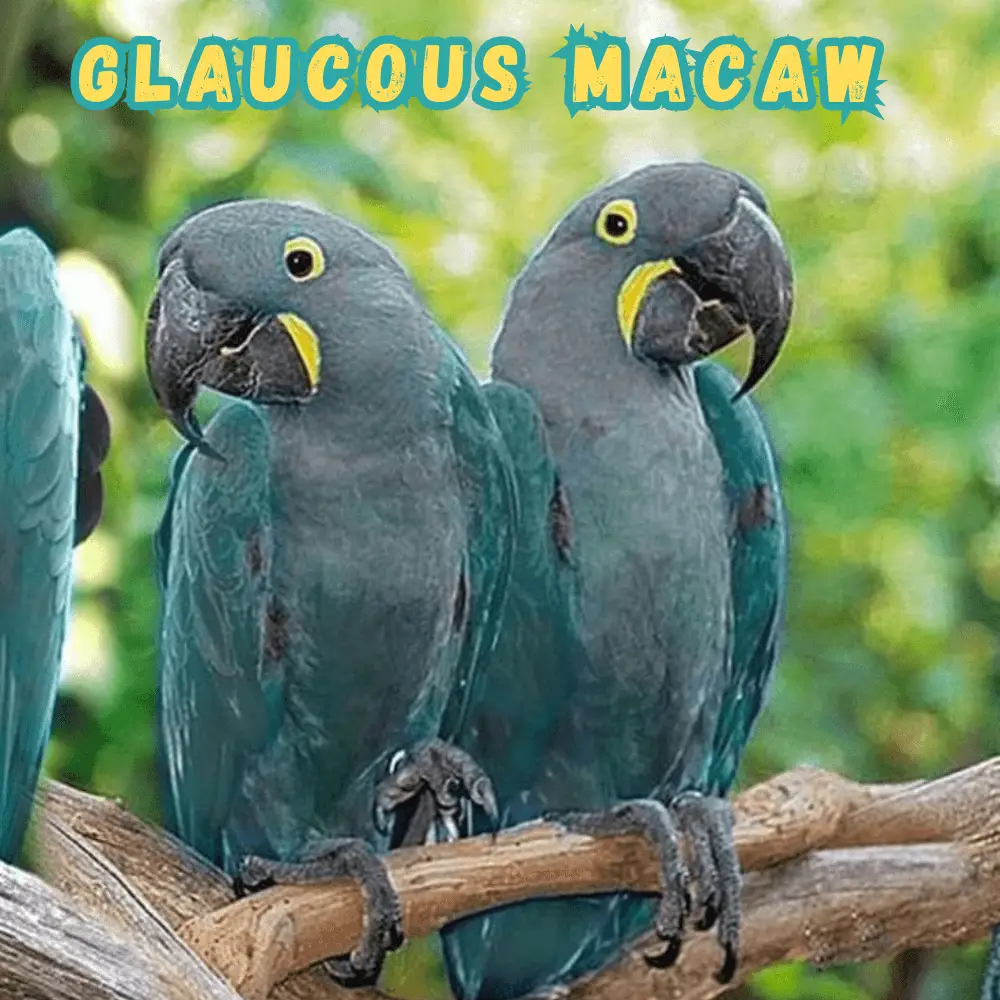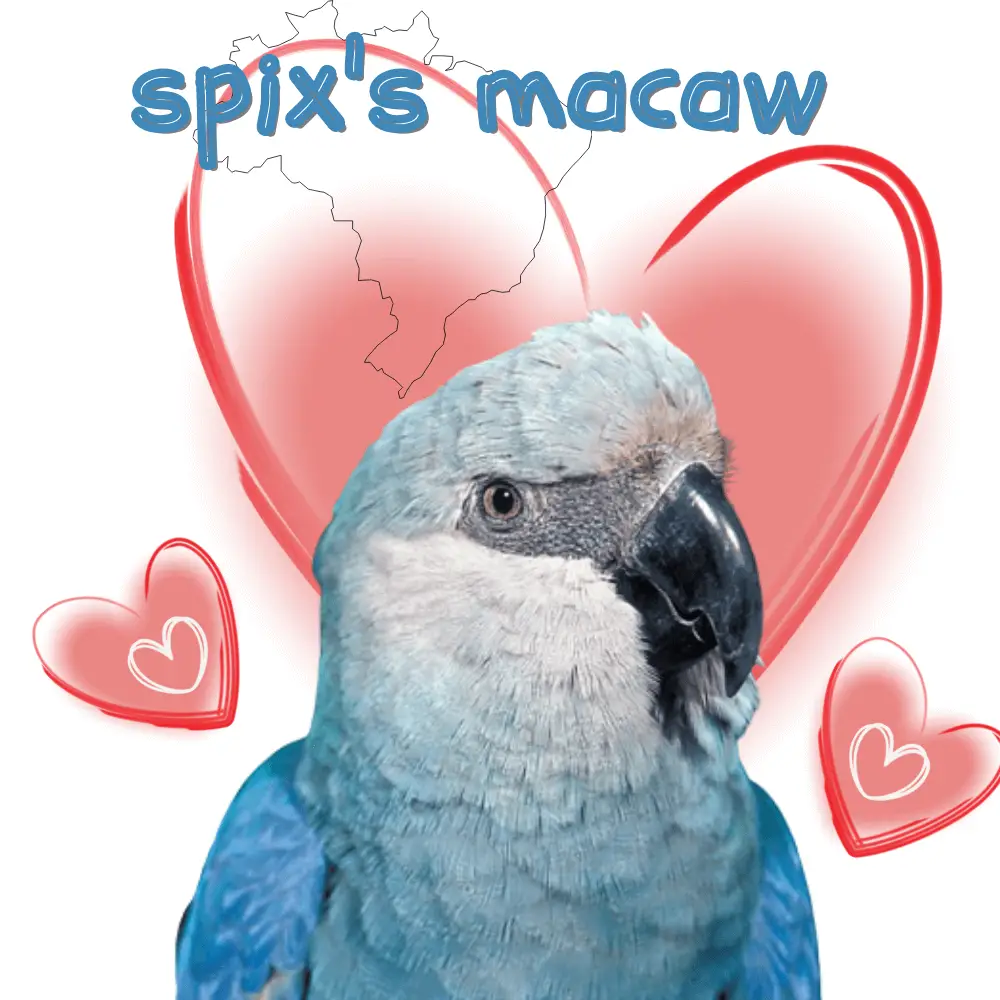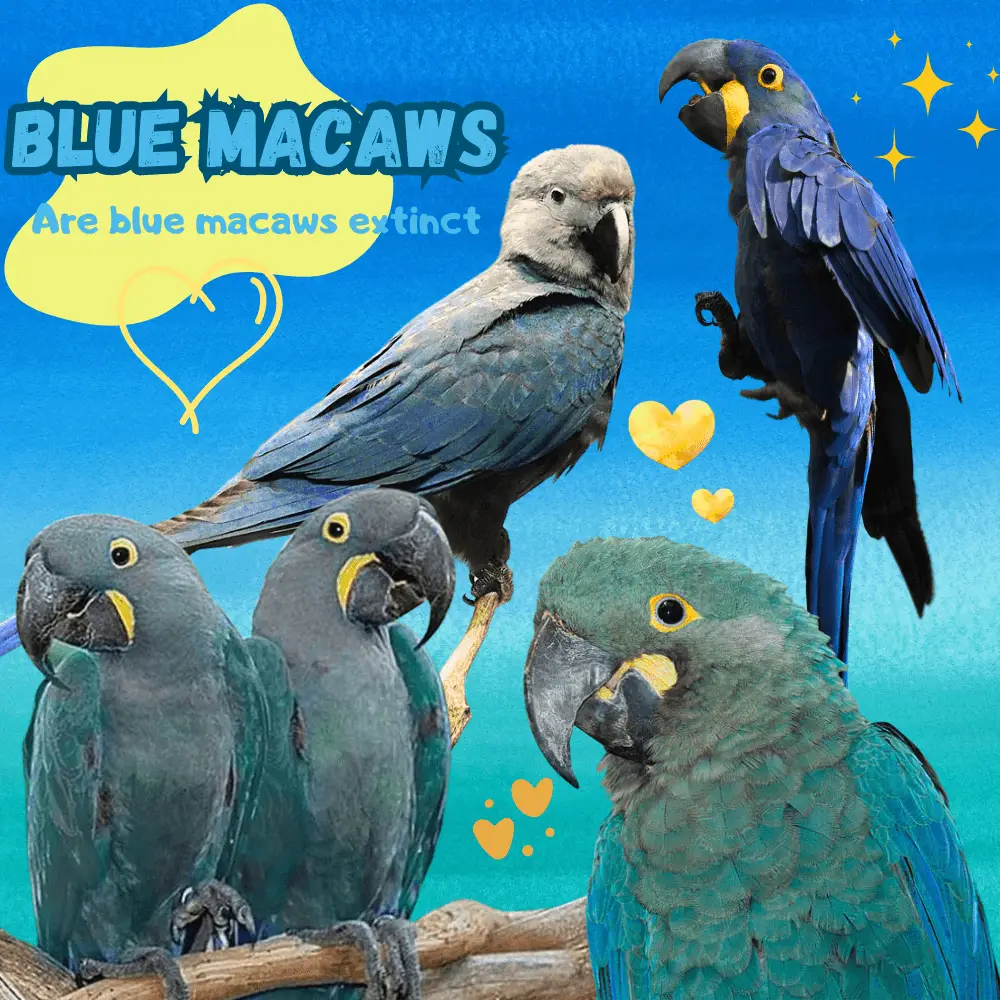Are blue macaws extinct: It is one of the types of parrots, and blue parrots include many types, and one of its types includes 160 species, and all of these types are characterized by a wonderful blue color, but all types of blue macaws share size, characteristics, and appearance as well,
They all have strong beaks so that they can crush the seeds that they feed on. Blue parrots are also characterized by legs Strong constipation, which makes them and helps them to catch trees and food such as fruits and many other things, and despite the exposure of blue macaws to extinction, there are numbers of them within the continent of Africa and South America, specifically within Brazil.
And it was announced in 2011 that the blue macaws were exposed to extinction around the entire world, specifically, approximately 13% of the various blue parrot species were listed as endangered, and indeed it was declared again in 2018 that greater proportions of extinction than before, specifically the numbers and species that live in the wild and remain Few numbers must be preserved, and indeed many organizations have worked on that, and this is what made the results go for the better.
Blue macaws are they extinct

It was officially announced in 2018 that blue macaws were threatened with extinction, as there were less than 100 birds alive, which prompted the competent authorities and organizations to establish other settlement places within their original habitat in various parts of the world.
This gave a great opportunity to preserve the remaining numbers, and the organizations that Working to preserve the remaining numbers from extinction are the ACTP organization, the Al-Wabrah organization, and an organization within Brazil, which is an organization affiliated with NEST.
One of the first steps taken by these organizations is to return the species of blue macaws to the wild in order to ensure the preservation of large numbers of blue macaws within a suitable environment for living and suitable for their own life.
Indeed, the Al-Wabra Organization has achieved great success in preserving parrots from extinction through a special program For artificial pollination, and among the other steps taken by organizations to protect blue macaws from extinction is to provide suitable housing for them within special sites to keep them from any human interference that may affect them,
in addition to the farms that have been allocated to them, which are considered as an original home for them in the wild in addition to the sites other organizations assigned to them.
And the last step taken by those organizations is to educate the population about preserving the remaining types of parrots from extinction, which is one of the effective ways to protect parrots.
Indeed, educational procedures have been designed near the areas where blue macaws exist to raise awareness within their environment and their own area, and despite all these steps and procedures for protecting Blue parrots from extinction This type of parrot is still threatened with extinction, and during the end of the nineties, the number of blue macaws decreased from the wild at a rate of 3000 birds to 2500 birds, and these numbers are according to the statement of the World Wildlife Fund.
Why are blue macaws endangered?
 Are blue macaws extinct
Are blue macaws extinct
blue macaws of all kinds are threatened with extinction, but after organizations work to take special steps to protect the remaining numbers of blue macaws from extinction, the numbers threatened with extinction out of the total numbers are 25%.
The organizations extended to work camps in the northern region of Mexico, the southern region of Ecuador, Peru, Colombia, Venezuela, Bolivia, and the southern region of Argentina. Indeed, these camps achieved good results in protection services from extinction. The causes of extinction are due to many reasons, including the following:
- The growth and multiplicity of cities.
- Clearing numbers of forests inhabited by species of blue macaws.
- environmental pollution.
- changes in the weather.
- Illegal trade in pets, specifically blue macaws.
- A low number of births for different types of blue parrots.
- Unavailability of suitable food sources for birds, particularly blue macaws.
- Infiltration of other animal species into the habitat of blue macaws.
Blue macaws
Blue macaws include different types, and each type has a place and different characteristics,
This genus includes three different types, and they are the following:
Hyacinth macaw
 Are blue macaws extinct
Are blue macaws extinct
The hyacinth macaw is also called the blue macaw or the whistling parrot. The origin of this type of parrot is in central and eastern South America. The blue color covers all of its feathers completely, but it differs from others in its tone, the area around the eyes and the area below the beak in yellow,
The length of this type is from the top of the head to Down the tail to 3 feet, equivalent to 0.91 m, and this length makes it the largest species of parrot in the world, but it is one of the most endangered species due to its exposure to a lot of illegal hunting.
Lear’s macaw
 Are blue macaws extinct
Are blue macaws extinct
This type of parrot is called the Lear parrot or the indigo parrot, and it is also distinguished by its wonderful blue color, excluding the area below the beak that is covered in black.
Lear’s macaw was discovered in the nineteenth century, specifically in the late seventies, specifically, a wild group was discovered in Brazil and it was not recognized It is a single species,
It is one of the species that are vulnerable to extinction, as there are no large numbers left, and the numbers that are still alive are estimated at about 1,250 parrots in two colonies within the Bahia region in Brazil, and this is what was counted in 2020.
Glaucous macaw
 Are blue macaws extinct
Are blue macaws extinct
This type of parrot lives within the continent of South America, specifically in Brazil, Argentina, and Paraguay. It is characterized by its turquoise blue color, except for the head area, which is colored gray. It is one of the species that are highly vulnerable to extinction, as there are only a few numbers of it in remote places in Argentina and Bolivia.
Spix’s macaw

Spix’s macaw species are known as Macaw or the Little Blue Parrot, and it is a type of Brazilian origin and is characterized by a medium size, so it is considered one of the smallest types of blue macaw.
The Scientific Director of Zoology at the ACTP said that a group of blue macaws, which contain 50 parrots of the type Spix macaw, were sent to special facilities in Brazil for protection from extinction and for artificial pollination programs.
After that, we will launch a group of this type of blue macaws inside the Caatinga forest, which is located in northeastern Brazil to coexist in an environment suitable for them, and Brazil, specifically Lugarini from the Chico Mendes Institute, stated that it is not possible to protect the blue parrot species from extinction and preserve the biological diversity of this parrot without the state’s assistance in that by educating people and providing ways and means for that, specifically the Spix type Because it is one of the most endangered species.
And Neiva Guedes was one of the main people in helping the blue macaws from extinction, as he established a project called Hyacinth Macaw in 1990 to protect the blue parrot from extinction by building appropriate nests suitable for the life of the blue macaws for reproduction. 5,000 blue parrots.

